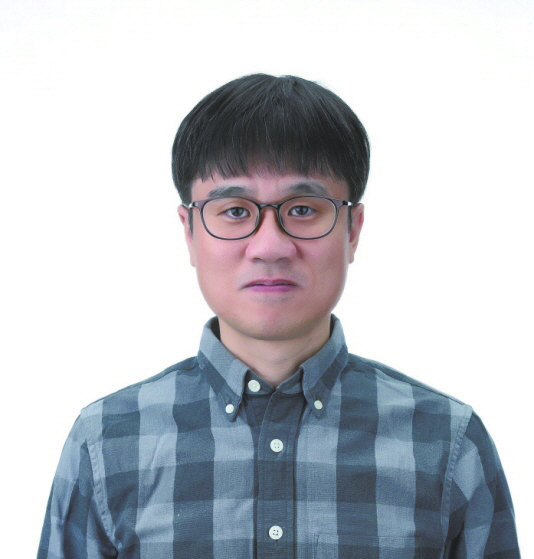
Our lab focuses on 3D shape analysis. The main research areas include shape quantification, shape mapping, region segmentation, and shape matching. We study how to quantify and understand characteristics like “convexity” and “smoothness.” Additionally, we research methods to transform complex shapes into more comprehensible forms, partition characteristic regions, and calculate corresponding positions on 3D surfaces to identify morphological similarities or differences. These techniques can be applied to analyze various shapes, with one of the primary applications being the analysis of brain development and brain disorders.
Our lab not only develops algorithms from a computer science perspective but also engages in interdisciplinary research by collaborating with medical institutions and research centers, both domestically and internationally, to apply our developed technologies in the medical field.
To briefly introduce our lab, we are relatively new to POSTECH and still small in size. Currently, we have six master’s students conducting research together, and we all get along like a family. This has created an environment where we can form closer relationships, share our research and concerns, and grow together. Recently, more undergraduate researchers have joined our lab, adding more vibrancy to our team.
I entered the field of medical image processing purely by chance. During my final semester as an undergraduate, I participated in a robotics course project. Through this, I realized the importance of visual information and naturally developed an interest in image processing. As I studied various image processing techniques, I discovered that the fundamental issue was understanding 3D object representation. To explore this further, I pursued graduate studies in a computer graphics lab, where I learned about various 3D representation and analysis methods.
One of our lab projects at that time involved collaboration with neuroscience professors. This allowed me to start research on representing the brain’s structure in 3D and automatically identifying various folds of the brain. This experience made me realize that image processing and 3D shape analysis techniques could be extended to contribute to medical research. Motivated by this, I pursued a PhD focusing on this application area and have continued researching ways to analyze diverse medical shape data.
Recently, we have been researching the automatic segmentation of cerebral regions. The brain is associated with various human functions depending on its regions, making precise segmentation crucial for understanding the brain-function relationship. However, a close examination of the brain reveals significant individual variations in shape, making accurate and consistent segmentation challenging even for experts.
Technically, leveraging widely used deep learning techniques may seem appropriate, but the nature of the medical imaging field makes it difficult to secure large amounts of training data. As a result, the segmentation accuracy for highly variable brain data is often limited. Our lab has recently developed a method that consistently extracts features even with changes in orientation or partial shape variations of the brain, improving segmentation accuracy. This approach allows us to achieve better results with a smaller amount of data compared to existing methods and has been applied to various brain development and brain disorder studies.
The ultimate goal of our lab is to discover morphological markers in neuroimaging data that humans may not notice and use them to aid in understanding brain development and disorders. Furthermore, we aim to leverage these markers for early diagnosis and prevention of brain diseases. While many challenges remain, I believe that tackling them one by one will eventually lead us to our goal.
I want to tell you that studying abroad comes with clear advantages and disadvantages.
One of the major benefits is academic growth. Studying abroad allows you to build a broad network with people from around the world and engage with individuals from diverse cultural backgrounds, gaining specialized knowledge and skills. Additionally, building an international network can open doors to various opportunities after graduation, such as employment or research collaborations.
However, there are also challenges. While activities as a research assistant (RA) or teaching assistant (TA) can help cover living expenses, financial planning and securing scholarships are still essential. You may also face difficulties adapting to a new culture. These days, the gap between domestic and international academic opportunities has significantly narrowed. When I pursued my studies abroad, fields like medical image processing were hard to find in domestic computer science programs. However, now Korean universities offer various subfields and majors, allowing students to access ample opportunities domestically.
That being said, for students aspiring to study abroad, it is crucial to thoroughly consider how they want to grow in their chosen field. Success in studying abroad requires careful preparation, which involves setting aside ample time to plan and systematically prepare. Therefore, having a clear goal and meticulous preparation are key to a successful study abroad experience.
To POSTECH students, I would like to encourage you to approach the word “medical” without any preconceived notions. Although our lab’s main application area is medical imaging data, from an algorithm development perspective, it is not significantly different from general computer science fields.
Some students may hesitate to pursue medical imaging, fearing that their expertise might become too niche. However, many algorithms developed in our lab and related fields are general methodologies applicable to various 3D shape analyses. This versatility means that students graduating from our lab often find employment at major IT companies like Google or Microsoft, as well as at medical technology companies such as NVIDIA, Siemens, and Philips. Those who continue in academia can also pursue research along these lines.
For students still undecided about graduate school or career paths, I want to emphasize that our lab is always open. I encourage interested students to visit, have a conversation, or even participate in our research. By doing so, you can experience firsthand how compelling the field of medical imaging can be and gain clarity in designing your career path.


